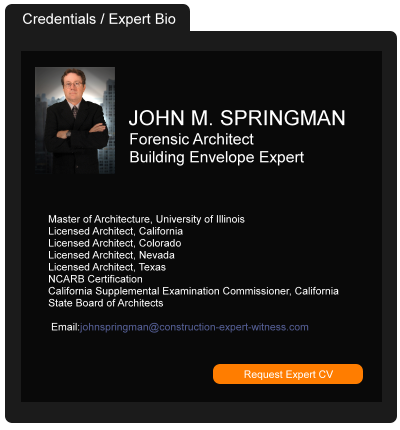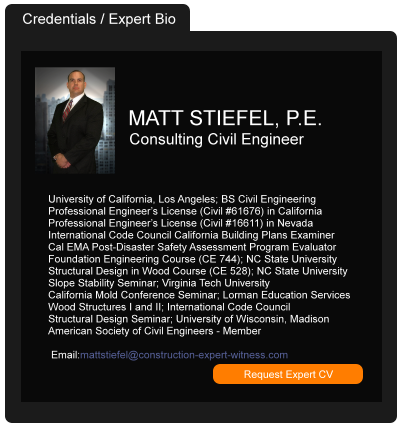Is Construction Heading Off the Fiscal Cliff?
December 20, 2012 —
CDJ STAFFAfter a period of growth, the construction industry lost 20,000 jobs in November, based on the federal jobs data. Damon Scott of New Mexico Business Weekly suggests that contractors may have laid off employees in anticipation of the “fiscal cliff.” Ken Simpson, the chief economist of the National Association of Home Builders said in a press release that “it is discouraging that construction employment is still struggling after three years of expansion in the overall economy.”
Read the court decisionRead the full story...Reprinted courtesy of
An Overview of the New EPA HVAC Refrigerant Regulations and Its Implications for the Construction Industry
September 30, 2024 —
Stefanie A. Salomon, Nadia Ennaji & Ali Heyat - Peckar & Abramson, P.C.The U.S. Environmental Protection Agency (EPA) recently announced a series of significant changes to the rules governing the use of refrigerants in heating, ventilation, and air conditioning (HVAC) systems. These changes, which were promulgated under the American Innovation and Manufacturing (AIM) Act, are designed to phase down the use of hydrofluorocarbons (HFCs), a class of potent greenhouse gases.
The AIM Act: A Game-Changer for HVAC Industry
The recent changes to refrigerant regulations by the EPA signify a substantial shift in environmental policy that will have profound implications for the construction industry. For the construction industry, this means a transition to next-generation technologies that do not rely on HFCs. The AIM Act’s sector-based restrictions will affect a wide range of equipment, including refrigeration and air conditioning systems integral to building design and function.
Starting January 1, 2025, the manufacturing or importing of any product in specified sectors that uses a regulated substance with a global warming potential of 700 or greater is prohibited (40 C.F.R. § 84.54(a)). The specified sectors listed include R-410A, the most common refrigerant used in the HVAC industry. The installation of systems using a regulated substance with a global warming potential of 700 or greater in specified sectors is allowed until January 1, 2026, provided that all system components are manufactured or imported before January 1, 2025. See 40 C.F.R. § 84.54 (c). “Installation” of an HVAC system is defined as the completion of assembling the system’s circuit, including charging it with a full charge, such that the system can function and is ready for its intended purpose. See 40 C.F.R. § 84.52.
Reprinted courtesy of
Stefanie A. Salomon, Peckar & Abramson, P.C. and
Nadia Ennaji, Peckar & Abramson, P.C.
Ms. Salomon may be contacted at ssalomon@pecklaw.com
Ms. Ennaji may be contacted at nennaji@pecklaw.com
Read the court decisionRead the full story...Reprinted courtesy of
Updated 3/13/20: Coronavirus is Here: What Does That Mean for Your Project and Your Business?
March 16, 2020 —
Alexander Gorelik, Joshua E. Holt, Brian N. Krulick, Shoshana E. Rothman, A. Michelle West, & Brian S. Wood - Smith CurrieThe outbreak of COVID-19 (“coronavirus”) has wreaked a considerable human toll of death, physical suffering, fear, and anxiety internationally. Much of the fear and anxiety results from a lack of information or a full understanding about the spread of the disease, protection against infection, and treatment. At Smith, Currie & Hancock, we urge our clients, friends, and colleagues to take seriously, but calmly and prudently, the threat of this disease to protect yourselves, your loved ones, and your businesses. The first step in that process is to inform yourselves with reliable information. Toward that end, we direct your attention to the Centers for Disease Control and Prevention’s Coronavirus Disease 2019 website: https://www.cdc.gov/coronavirus/2019-ncov/index.html
In addition to the human toll, coronavirus has caused substantial disruptions to economies worldwide. In that regard, the adage “a picture is worth a thousand words,” is particularly foreboding. Satellite images taken by the U.S. National Aeronautics and Space Administration (NASA) of China at the outset of the coronavirus outbreak and approximately a month later show a dramatic decline in air pollution, signifying and illustrating a sharp decline in industrial activity and transportation caused by the disease.
Reprinted courtesy of Smith Currie attorneys
Alexander Gorelik,
Joshua E. Holt,
Brian N. Krulick,
Shoshana E. Rothman,
A. Michelle West, and
Brian S. Wood
Mr. Gorelik may be contacted at agorelik@smithcurrie.com
Mr. Holt may be contacted at jeholt@smithcurrie.com
Mr. Brian may be contacted at bnkrulick@smithcurrie.com
Ms. Shoshana may be contacted at serothman@smithcurrie.com
Ms. West may be contacted at amwest@smithcurrie.com
Mr. Wood may be contacted at bswood@smithcurrie.com
Read the court decisionRead the full story...Reprinted courtesy of
Social Distancing and the Impact on Service of Process Amid the COVID-19 Pandemic
April 13, 2020 —
Robert Devine, James Burger & Susan Zingone - White and WilliamsService of process usually requires person-to-person contact and is an essential part of civil procedure. It notifies the defendant of the legal proceedings against him/her and establishes jurisdiction. “Process” refers to the documents that must be served on a defendant. If service of process is not performed pursuant to the governing rules of civil procedure, a lawsuit cannot proceed.
Service of Process in NJ and PA
Personal service is required to be the first attempted means of service in New Jersey. If personal service is not successful, then service may be made by mailing a copy of the process via registered or certified mail with return receipt requested to the defendant’s usual place of abode or business/place of employment, or to an authorized agent. The party attempting to serve the defendant by mail can choose to mail the process by regular mail as well, and if the defendant refuses to accept or claim the registered or certified copy, and the regular mail copy is not returned, then service is considered effectuated.
Pennsylvania allows for a defendant to be served via personal service by handing a copy to the defendant or by delivering a copy to an adult family household member at the defendant’s residence. Pennsylvania also permits service of process by mail. Process can be served by mail requiring a signature of the defendant. If the mail is unclaimed, alternative service must be attempted.
Reprinted courtesy of White and Williams attorneys
Robert Devine,
James Burger and
Susan Zingone
Mr. Devine may be contacted at deviner@whiteandwilliams.com
Mr. Burger may be contacted at burgerj@whiteandwilliams.com
Ms. Zingone may be contacted at zingones@whiteandwilliams.com
Read the court decisionRead the full story...Reprinted courtesy of
Insuring Lease/Leaseback Projects
August 19, 2024 —
David G. Jordan & Jeffrey J. Vita - Saxe Doernberger & Vita, P.C.Overview
Several states utilize a unique statutory mechanism to allow school districts to finance the construction of public-school facilities. This arrangement (known as a “lease-leaseback agreement”) allows a school district to lease property to a contractor/developer, who then constructs or renovates a school facility on the property. Once the work is completed, the contractor/developer leases the school building back to the school district. The school district then makes lease payments over time, often many years, which can be structured in various ways to spread out the cost of construction. The arrangement typically requires a site lease for the land leased to the contractor/developer, a facilities lease for the lease-back of the school building to the school district and a traditional construction agreement. In some ways, the arrangement resembles a Public-Private Partnership (PPP) whereby a public entity collaborates with a private entity for the purpose of financing and delivering a project traditionally provided solely by the public sector.
Reprinted courtesy of
David G. Jordan, Saxe Doernberger & Vita, P.C. and
Jeffrey J. Vita, Saxe Doernberger & Vita, P.C.
Mr. Jordan may be contacted at DJordan@sdvlaw.com
Mr. Vita may be contacted at JVita@sdvlaw.com
Read the court decisionRead the full story...Reprinted courtesy of
Arizona Supreme Court Upholds Constitutionality of Provision Relating to Statutory Authority for Constructing and Operating Sports and Tourism Complexes
June 18, 2019 —
Amanda Z. Weaver - Snell & WilmerIn an opinion published February 25, 2019, the Arizona Supreme Court held that Maricopa County’s surcharge on car rental agencies to fund a stadium and other sports- and tourism-related projects did not violate either the dormant Commerce Clause of the United States Constitution or the anti-diversion provision of the Arizona Constitution, art. 9, § 14. Saban Rent-a-Car LLC v. Ariz. Dep’t of Revenue.
In 2000, the Arizona Legislature created the Arizona Tourism and Sports Authority (the Authority) to build and/or operate a variety of sports-related facilities, including Major League Baseball spring training facilities, and youth and amateur sports and recreation centers. Taxes and surcharges, approved by voters, are the sole funding for the Authority’s construction projects, including the challenged surcharge in Maricopa County. This surcharge is based on the income from car rental companies leasing vehicles to customers for less than one year, and is the greater of $2.50 per rental or 3.25% of the company’s gross proceeds or income. A.R.S. § 5-839. The state treasurer deposits $2.50 per rental transaction into the Maricopa County Stadium District, as it has since 1991, and the remaining amount of the difference between $2.50 per transaction and 3.25% of the company’s gross income or proceeds is distributed to the Authority. Rental car companies often pass this surcharge on to their customers.
Read the court decisionRead the full story...Reprinted courtesy of
Amanda Z. Weaver, Snell & WilmerMs. Weaver may be contacted at
aweaver@swlaw.com
Understand and Define Key Substantive Contract Provisions
March 23, 2020 —
Phillip L. Sampson Jr. & Richard F. Whiteley, Construction ExecutiveThe following contract provisions should be clearly understood before undertaking any construction project commences.
Force Majeure
Often referred to as an “Act of God,” a force majeure is an event, typically beyond the parties’ control, that prevents performance under a contract. To determine if a contractor need a force majeure clause in its contract, it should ask whether there may be instances where events beyond the contractor’s control could impact its contractual performance? If so, it will want this clause.
Courts currently treat force majeure as an issue of contractual interpretation, focusing on the express language in the contract. Consequently, the scope and applicability of a force majeure clause depends on the contract’s terms. Using broad language in a force majeure clause may help protect against unforeseen events. But to the extent possible, parties should describe with particularity the circumstances intended to constitute a force majeure.
The law relating to force majeure also fairly consistently provides that parties cannot avoid contractual obligations because performance has become economically burdensome. Courts have refused to apply force majeure clauses where an event only affects profitability. Recent attempts to categorize tariffs on construction materials as a force majeure have failed. Unless a tariff or tax is specifically listed as a force majeure event, it is unlikely to constitute a force majeure because it only affects profitability.
Reprinted courtesy of
Phillip L. Sampson Jr. & Richard F. Whiteley, Construction Executive, a publication of Associated Builders and Contractors. All rights reserved.
Read the court decisionRead the full story...Reprinted courtesy of
The Law of Patent v Latent Defects
March 19, 2015 —
Beverley BevenFlorez-CDJ STAFFCandice B. Macario of Gordon & Rees LLP analyzed the case Delon Hampton & Associates, Chartered v. The Superior Court of Los Angeles, and stated that “[i]n his case, a design professional successfully challenged a construction defect lawsuit brought against them, on the basis that the defect complained of was open and obvious and the County had ran out of time to bring their action.”
Macario recommended “as lawsuits are filed close to the ten year statute of repose, one area to explore in a single issue case is if you can eliminate a cause of action based on patent defects. Moreover, in multi-issue cases for several construction defects, parties should always be aware of analyzing whether issues can be identified as patent and perhaps used as a tool in negotiations, settlement discussions or pre-trial motions.”
Read the court decisionRead the full story...Reprinted courtesy of


































































